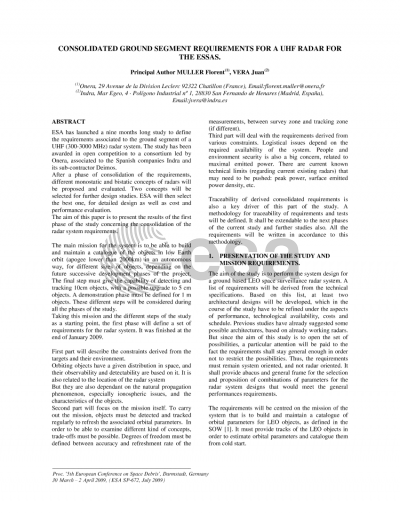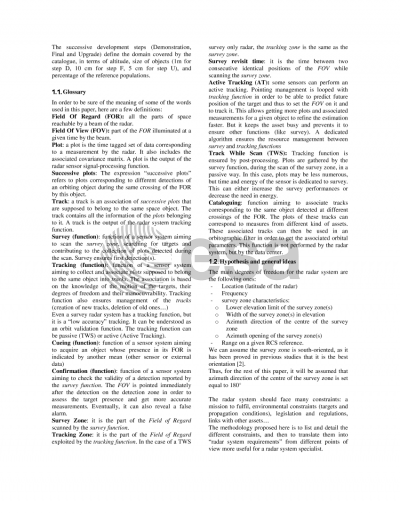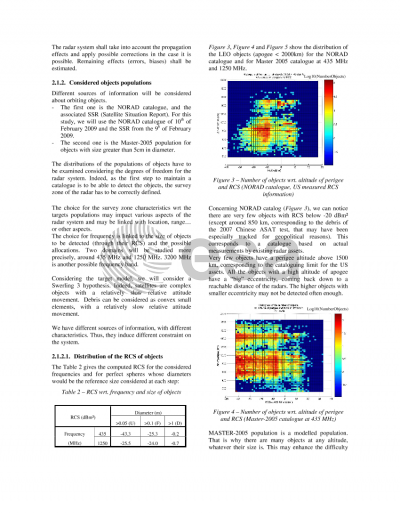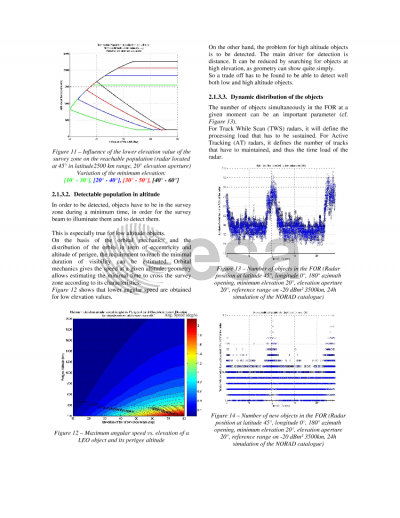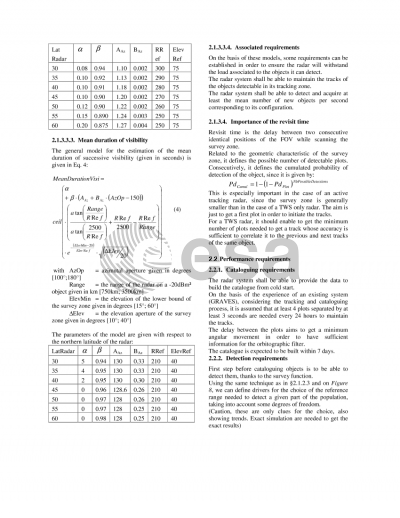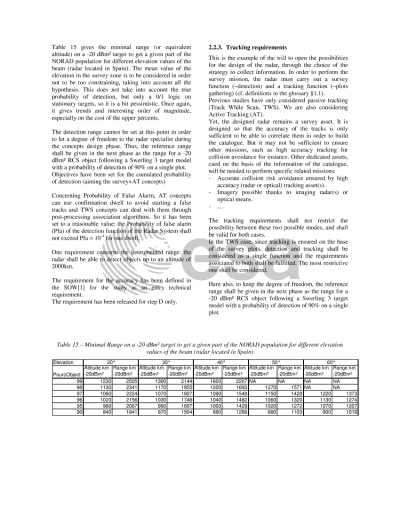Document details
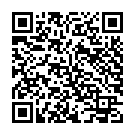
Abstract
ESA has launched a nine months long study to define the requirements associated to the ground segment of a UHF (300-3000 MHz) radar system. The study has been awarded in open competition to a consortium led by Onera, associated to the Spanish companies Indra and its sub-contractor Deimos. After a phase of consolidation of the requirements, different monostatic and bistatic concepts of radars will be proposed and evaluated. Two concepts will be selected for further design studies. ESA will then select the best one, for detailed design as well as cost and performance evaluation. The aim of this paper is to present the results of the first phase of the study concerning the consolidation of the radar system requirements. The main mission for the system is to be able to build and maintain a catalogue of the objects in low Earth orbit (apogee lower than 2000km) in an autonomous way, for different sizes of objects, depending on the future successive development phases of the project. The final step must give the capability of detecting and tracking 10cm objects, with a possible upgrade to 5 cm objects. A demonstration phase must be defined for 1 m objects. These different steps will be considered during all the phases of the study. Taking this mission and the different steps of the study as a starting point, the first phase will define a set of requirements for the radar system. It was finished at the end of January 2009. First part will describe the constraints derived from the targets and their environment. Orbiting objects have a given distribution in space, and their observability and detectability are based on it. It is also related to the location of the radar system But they are also dependant on the natural propagation phenomenon, especially ionospheric issues, and the characteristics of the objects. Second part will focus on the mission itself. To carry out the mission, objects must be detected and tracked regularly to refresh the associated orbital parameters. In order to be able to examine different kind of concepts, trade-offs must be possible. Degrees of freedom must be defined between accuracy and refreshment rate of the measurements, between survey zone and tracking zone (if different).Third part will deal with the requirements derived from various constraints. Logistical issues depend on the required availability of the system. People and environment security is also a big concern, related to maximal emitted power. There are current known technical limits (regarding current existing radars) that may need to be pushed: peak power, surface emitted power density, etc.Traceability of derived consolidated requirements is also a key driver of this part of the study. A methodology for traceability of requirements and tests will be defined. It shall be extendable to the next phases of the current study and further studies also. All the requirements will be written in accordance to this methodology.
Preview
